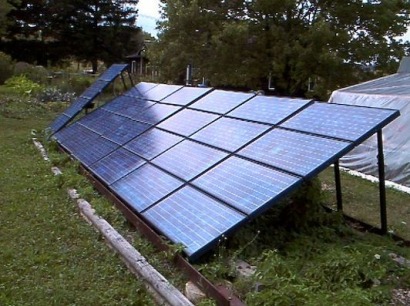
The Solar Trade Association (STA) has welcomed the publication of the government’s UK Renewables Roadmap which identifies solar PV as a ‘key technology’ that will help the UK to fulfil its 2020 15% renewable energy target. Renewable energy is now expected to contribute 30% of the country’s electricity demand in 2020 with solar PV making a very important contribution.
The announcement means that for the first time, non-domestic solar PV will not require as much support as that given to many other renewable technologies. The document also announces the creation of a dedicated strategy for solar PV development in 2013 which is something that the STA has been requesting for some time.
“The Renewables Roadmap shows that solar PV is now fully recognised as a significant contributor to the UK’s renewables mix” said Paul Barwell, STA Chief Executive. “We’d go further and say solar PV will be a heavy-lifter in the UK’s broader energy mix. We’re going to be a lot cheaper than CCS and nuclear in the 2020’s. It’s therefore absolutely right that solar has its own dedicated strategy, as gas now has, and we look forward to working with DECC on this.”
The solar strategy will encompass all sub-sectors of the solar industry including the commercial solar sector with recognition given to the value of smaller scale projects. The Roadmap also identifies grid issues as an area for action given that costs of some solar projects are unnecessarily increased by grid connection delays. The document also identifies the need to minimise investment risk for independent generators in the electricity markets as a priority action by the Department of Energy & Climate Change (DECC).
The STA has been campaigning for recognition of solar PV by the government and the publication of the Roadmap represents a successful conclusion to the association’s efforts. However, the STA believes there is still a lot of work to do to convince the government of just how big a contribution solar PV can make to the UK’s energy demands. The IPCC, for instance, anticipates that solar PV could be the biggest generator of power in the world by 2050, but this is not recognised by the Roadmap which cites technical limits for solar despite the fact that German engineers are already integrating far greater solar capacity into their networks. The STA also maintains that solar needs to be compared to the retail price for electricity rather than just levelised costs of other forms of energy.
“There are still some niggles with the understanding and presentation of solar PV, but this only serves to illustrate why it is essential that Government and industry work closely together” said Leonie Greene, STA Head of External Affairs. “We are therefore very pleased that DECC recognises the value of further developing this working relationship in the Roadmap.”
Further information:
Department of Energy & Climate Change (DECC) Renewable Roadmap

